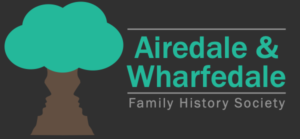Zoom Meeting Thursday 20 April
By Alan Ruston
Notes by Stephen Miller and Susanne Young
Maps as we know them today developed during C19th. The Ordnance Survey (State controlled map-making) started in 1801 and took 70 years to complete England, Scotland and Wales by which time they began again in order to keep up to date. Prior to C19th some simple route maps were sometimes available at the local hostelry. Other earlier decorative maps were created for the gentry but these were not accurate representations. Maps for wider public consumption began to appear with the coming of the railways early C19th. These paper maps were commercially produced at a reasonable cost to meet consumer demand.
Maps have been produced for many different purposes over the years. The Medieval Mappa Mundi c.1300 in Hereford Cathedral depicts important people and places with Jesus Christ at the top, Jerusalem in the middle and England bottom left. The British Library and the London Topographical Society hold many detailed old maps. An 1899 Jewish map shows the location of the Jewish population of London and an 1871 map depicts Roman Catholic inhabitants. Other types of map include a late C20th map of house prices, drainage maps and underground maps. The London Tube map that we know today was not introduced until 1933.
Goad maps were produced C19th by Abraham Goad. These extremely detailed city maps were originally only available to insurance companies but can now be found in many County record offices. Maps detailing census enumeration districts can be especially interesting for the family historian and may be available in County record offices. Godfrey maps are also a valuable resource for the family historian in locating ancestors and can be purchased relatively cheaply. A fascinating collection of free online maps is available on National Library of Scotland website. Stanford maps have also been digitalised and are available to search online.
The demands of the Post Office led to 1855 Government legislation which put the naming of streets and the numbering of houses into local authority hands. Prior to this, streets and houses were usually randomly named by local landowners or house builders. Some indexes of previous earlier names may be found in County record offices if you are trying to locate a particular property or street which has been renamed.
Map making has been revolutionised over recent years with the onset of digital technology and satellite imagery. Paper maps have largely been replaced by car satnavs and smart phones. However, the study of historical maps can be especially rewarding for locating ancestors and studying the places where they lived and worked.
Recommended reading:
Maps for Historians by Paul Hindle
Essential Maps for Family Historians by Charles Masters
